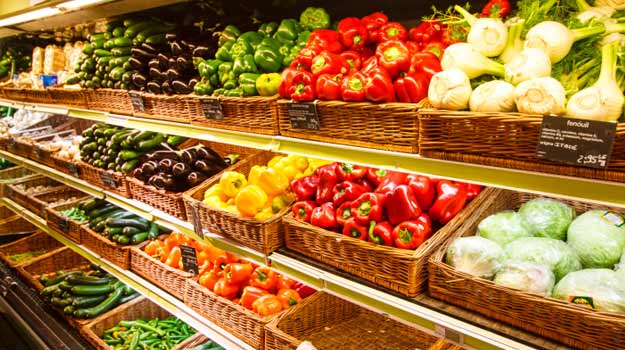You look down at your watch as you enter your local supermarket. It says 6:35 pm. That's good, you think. Plenty of time. "I'm only here to pick up bread and eggs and I'll be on my way." Oh no you won't. Little do you know the small, manipulative tricks stores have up their sleeves to make you linger on, to slow you down, to make you fill up your cart to the absolute brim and in general, just to make you stay. That's almost sweet, but not really when it's burning a hole in your pocket.
There are literally thousands of items inside a store, all vying for your attention without saying a word. According to the countless psychology researches and supermarket studies, stores aren't only designed, they're engineered - with only one goal in mind - to make you spend as much as you can. They've hit a homerun with these tricks, but if you know better, you'll save better.
1. That Smells Divine! As soon as you enter most stores, you're most likely to be greeted by a gorgeous display of freshly baked goods. Stores know that the bewitching aroma of a beautiful loaf of bread or that Cajun chicken that's slowing roasting away will get your hungry and activate your salivary glands - and everyone knows that you tend to buy a lot more when you're hungry.
Similarly, stores display a fleet of freshly cut flowers and colourful balloons at the entrance. These make you happy and release dopamine - which, in amateur language, makes you do happy things. You're filled up with joy and it makes you spend impulsively.
2. The Health Kick: Vegetables and healthy ingredients are likely to be somewhere at the front of the store. Psychological studies say that once you load up on the healthy stuff, you won't feel as guilty picking up random junk items down the aisle. Makes sense, yes? 
3. The Essentials: Interestingly, the essential items like bread, milk and eggs are kept right at the back of the store. They want you to walk around and pass through dozens of aisles and thousands of items before you can get to the ones you really need. Wandering around, you're likely to put stuff in your cart you can no intention of buying.
Conversely, some say the real reason to store milk at the back is because of simple logistics. Milk needs to be refrigerated quickly and the trucks unload at the back. It's easier and quicker to fill the cases since the refrigerators are at the back as well.
4. Where's the Fresh Food Aisle Again? Stores are designed to make you lose your way. Getting lost inside a store makes you lose focus, thereby contributing to mindless spending, says Martin Lindstrom, marketing consultant and author of 'Brandwashed: Tricks Companies Use to Manipulate Our Minds and Persuade Us to Buy.'
They also tend to reorganize the store once a while. This keeps you lost, you can never find what you're looking for and there are plenty of new, shiny things on the way.
5. Make a U-Turn? I Don't Think So: This is probably the simplest tricks of all. If you've ever noticed, you can never take a turn back mid-aisle. Stores force you to walk through the entire aisle, making sure you scan all the items on the way.
6. Levelled: Stores keep the profitable items at your eye-level on the shelf because this level tends to get your attention first. Usually, food manufacturers pay stores a slotting fee to get this space to maximize their profits.
Similarly, there's an eye-level for kids too - where they keep the sugary cereals and everything else that'll entice the little ones. 
7. Save, Save, Save! Stores might have tempting sales on, but ask yourself if you're really saving money. Most sales are designed to get rid of items nearing their expiry date and the deals aren't really worth it if you break it down.
Sometimes stores have a sign on a specific item that says 'maximum five per customer' - just to make it sound scarce. It makes you think everyone else is buying this item and you won't be left with anything.
8. We Belong Together: Foods that go together are generally kept together to increase sales. The idea is you'll tend to pick up dips if you're buying chips, and you'll get that bottle of jam because you're buying peanut butter - so they're kept right next to each other, how very convenient.
9. Slow it Down: Stores want to keep you inside as long as they can and one of the ways they do this is through music. They purposely choose a lovely, slow track that tends to relax you to linger around to shop more. Also, have you ever noticed how two carts can hardly pass through an aisle at the same time? Stores deliberately make their aisles narrow to make you go slow.

10. Discount Cards: What's not to love about a discount card, right? Unfortunately, there's a dual aim at play here. Stores use discount cards to gather data about their customers - data that's very important to them in the long run. They track the spending habits of their customers and tweak strategies to maximize their profits.
11. Dropping the Rupee Sign: Most stores display the price without the dollar or the rupee sign and use just numbers. Psychologically, when we look at a dollar sign, we think about spending, but when we look at numbers alone, we think about saving.
12. Something Bigger, Maybe? Bigger shopping carts mean more space for more food. Marketing consultant Martin Lindstrom did an experiment where the shopping carts were doubled in size. The result? People bought 40 percent more!










